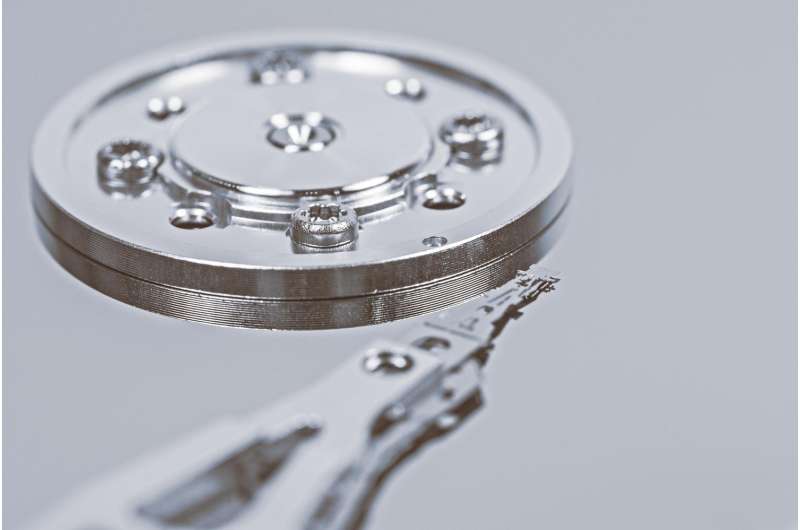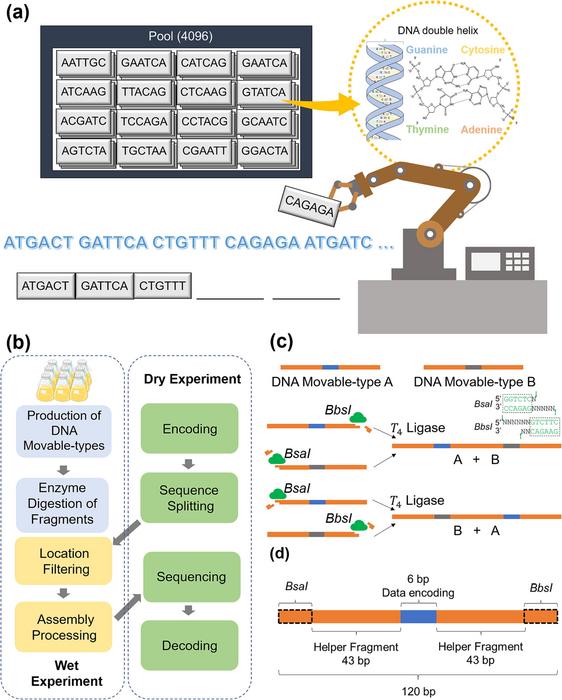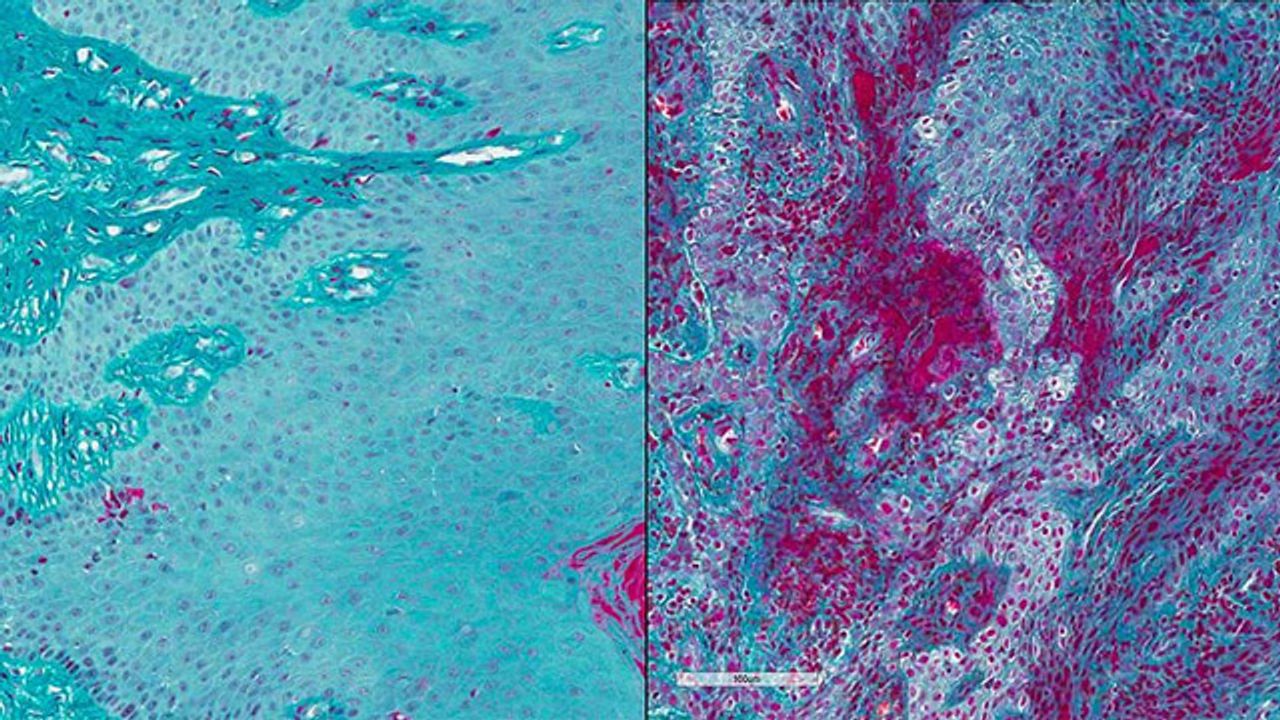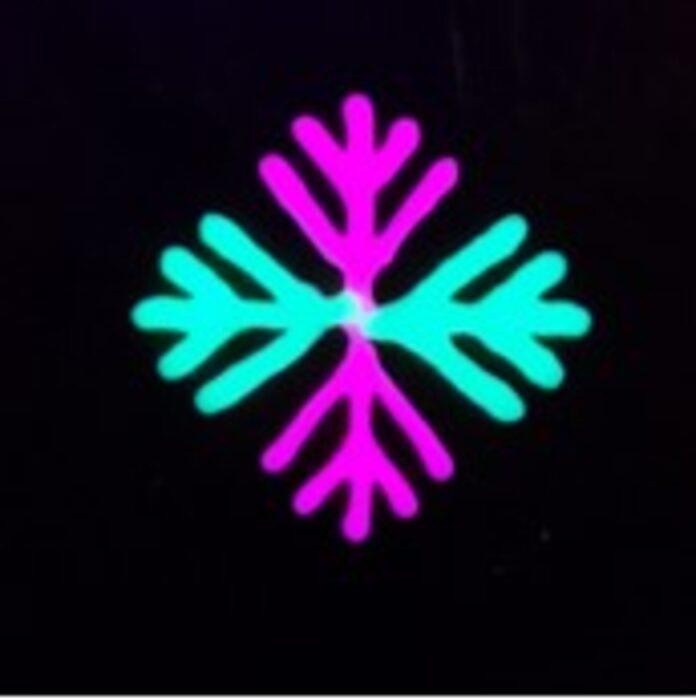
via Phys.org
New study reveals a zoo of magnetic patterns at the atomic scale
Atomic-scale magnetic patterns resembling a hedgehog’s spikes could result in hard disks with massively larger capacities than today’s devices, a new study suggests. The finding could help data centers keep up with the exponentially increasing demand for video and cloud data storage.
In a study published today in the journal Science, researchers at The Ohio State University used a magnetic microscope to visualize the patterns, formed in thin films of an unusual magnetic material, manganese germanide. Unlike familiar magnets such as iron, the magnetism in this material follows helices, similar to the structure of DNA. This leads to a new zoo of magnetic patterns with names such as hedgehogs, anti-hedgehogs, skyrmions and merons that can be much smaller than today’s magnetic bits.
“These new magnetic patterns could be used for next-generation data storage,” said Jay Gupta, senior author of the study and a professor of physics at Ohio State. “The density of storage in hard disks is approaching its limits, related to how small you can make the magnetic bits that allow for that storage. And that’s motivated us to look for new materials, where we might be able to make the magnetic bits much smaller.”
To visualize the magnetic patterns, Gupta and his team used a scanning tunneling microscope in his lab, modified with special tips. This microscope provides pictures of the magnetic patterns with atomic resolution. Their images revealed that in certain parts of the sample, the magnetism at the surface was twisted into a pattern resembling the spikes of a hedgehog. However, in this case the “body” of the hedgehog is only 10 nanometers wide, which is much smaller than today’s magnetic bits (about 50 nanometers), and nearly impossible to visualize. By comparison, a single human hair is about 80,000 nanometers thick.
The research team also found that the hedgehog patterns could be shifted on the surface with electric currents, or inverted with magnetic fields. This foreshadows the reading and writing of magnetic data, potentially using much less energy than currently possible.
“There is enormous potential for these magnetic patterns to allow data storage to be more energy efficient,” Gupta said, though he cautions that there is more research to do before the material could be put into use on a data storage site. “We have a huge amount of fundamental science still to do about understanding these magnetic patterns and improving how we control them. But this is a very exciting step.”
Original Article: Magnetic ‘hedgehogs’ could store big data in a small space
More from: Ohio State University
The Latest Updates from Bing News & Google News
Go deeper with Bing News on:
Atomic-scale magnetic patterns
- Enhancing Atomic Clock Accuracy with Superradiance: A New Discovery
Atomic clocks, the paragon of precision time measurement, might soon become even more accurate thanks to a quantum process known as superradiance. These time-keeping marvels operate by measuring the ...
- Making diamonds at ambient pressure
Researchers have grown diamonds under conditions of 1 atmosphere pressure and at 1025 degrees Celsius using a liquid metal alloy composed of gallium, iron, nickel, and silicon, thus breaking the ...
- New model extends theory of pattern formation to the nano-cosmos
A new model developed by scientists from the Max Planck Institute for Dynamics and Self-Organization (MPI-DS) extends the theory of elastic phase separation towards nanoscopic structures. Such ...
- Making light 'feel' a magnetic field like an electron would
Unlike electrons, particles of light are uncharged, so they do not respond to magnetic fields. Despite this, researchers have now experimentally made light effectively "feel" a magnetic field within a ...
- Check out Some of the Mind-Blowing Visuals as Phish Bounced Around the Vegas Sphere
The latest from the world's largest LED screen in our running blog. Don't miss a story from inside (and outside) the Sphere.
Go deeper with Google Headlines on:
Atomic-scale magnetic patterns
[google_news title=”” keyword=”atomic-scale magnetic patterns” num_posts=”5″ blurb_length=”0″ show_thumb=”left”]
Go deeper with Bing News on:
Next-generation data storage
- Teradata Embraces Open Source with Apache Iceberg and Delta Lake in Latest Data Platform Innovations
Teradata today announced a uniquely open and connected approach to supporting open table formats (OTFs) Apache Iceberg and ...
- Amazon Web Services to build $11B Indiana data center campus
An Amazon subsidiary focused on web services plans to invest $11 billion into the construction of a data center campus in north-central Indiana, Gov. Eric Holcomb announced Thursday.
- Saturam Qualdo-DRX Recognized for Data Technology Innovation in 2024 Data Breakthrough Awards Program
Prestigious International Awards Program Honors Outstanding Data Technology Products and CompaniesSAN FRANCISCO, April 30, 2024 (GLOBE NEWSWIRE) -- Qualdo.ai today announced that its Qualdo-DRX ...
- Next-Generation IBM FlashCore Modules Feature Everspin's PERSYST 1 Gigabit STT-MRAM, Enhancing Reliability
Everspin Technologies, Inc. (NASDAQ: MRAM), the world’s leading developer and manufacturer of Magnetoresistive Random Access Memory (MRAM) persistent memory solutions, today announced that IBM has ...
- The Gigawatt Data Center Campus is Coming
Hyperscale tech companies are seeking campuses that can support 1 gigawatt of electric power capacity. Developers say new approaches to MegaCampuses can enable new ...
Go deeper with Google Headlines on:
Next-generation data storage
[google_news title=”” keyword=”next-generation data storage” num_posts=”5″ blurb_length=”0″ show_thumb=”left”]










